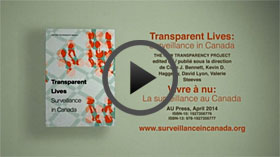Our comprehensive report on surveillance in Canada is available. Download it here.
A Day In The Life Of A Nine-Year-Old: Farah
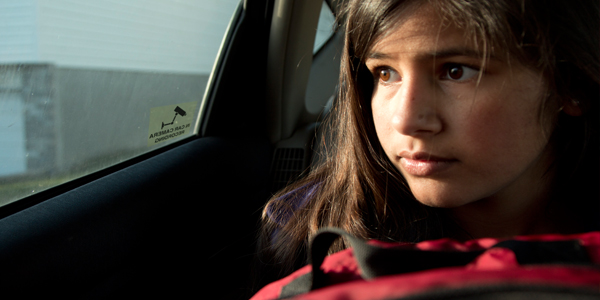
Farah crushes the bedcovers around her head, postponing her morning march through breakfast and homework. Her eyes snap open as she remembers today’s plans. Today, she will receive what is perhaps a preadolescent’s most desired technology and will find herself winging her way to another country. Were she attuned to such things, she might also recognize that her day will demonstrate how visible her life and the lives of those around her have become.
She slides out of bed forty minutes before her older brother Kay’s alarm clock is set to pound in the adjacent room. Gazing out the window, Farah catches the eye of her elderly neighbour, Mrs. Krupp, who returns her wave. She and Farah became acquainted at the park, where Mrs. Krupp is one of a handful of adults who watch over the kids as they tear around the play structure.
Farah’s family moved to this Mississauga neighbourhood eighteen months ago. They bought this house because it is on a direct bus route to her mom’s job at a small computer software company. Her father, a physics professor at the University of Toronto, has had to resign himself to battling the traffic several times a week to get downtown.
Today, her dad is already at work, but Farah does not want to wake her mom. By habit, she avoids the creaky floorboards that her parents use to note when she climbs out of bed. Recently, though, they have been less vigilant, because two months ago, her mom had a new baby, Bruno. Born prematurely, Bruno had to stay in the hospital for several weeks while physicians ran tests for blood gas analysis, took chest X-rays, and conducted regular cardio-respiratory monitoring. During the pregnancy, Farah’s parents became accustomed to a high degree of medical scrutiny, given that her mom is over forty, which made her pregnancy more high risk. Consequently, Farah was often left with Mrs. Krupp while her mom went to the hospital for a raft of tests to ensure that there were no genetic anomalies and that the baby was developing according to standard norms.
Shortly before the birth, her mom had come home with a three-dimensional ultrasound image of Bruno. Farah’s parents had immediately posted the picture on her mom’s Facebook page among hundreds of pictures of Farah and her older brother. Everyone calls it Bruno’s “first picture,” but Farah doesn’t think it looks anything like him—or anyone else. She hasn’t spent a lot of time inspecting it, since she finds it kind of creepy.
That was also around the time that her dad set up the baby things, including a crib, right in Farah’s room. Clipped to the side of the crib is a new baby monitor. It allows her parents to hear Bruno, but it also has a camera connected to the Wi-Fi system, which means they can see him on their computer or smartphone from anywhere in the world. The device has night vision and zoom capability, can measure temperature and humidity, and can detect whether the baby is moving around. It even has a speaker that her parents can use to talk to Bruno remotely. Farah has wondered whether her parents use it to see and hear her as well.
Tiptoeing downstairs, she thinks how nice it is not to stumble over the clothes and computer cables that usually litter the floor. Her dad, although exhausted, has made a special effort to keep the house uncharacteristically tidy. Farah thinks he does this because of the community health nurse who has visited their home on a couple of occasions to ensure that Bruno and her mom are doing well, a visit that includes monitoring for signs of post-partum depression or psychosis. Her parents appreciate the concern but are still uncomfortable with how the nurse scans the front room and kitchen for signs that something might be awry. Hence her dad’s out-of-the-ordinary cleaning efforts.
When Farah’s brother Kay wakes up, he will dash off to an early soccer practice, which means that she can play on the computer undisturbed. She enjoys the free online games and does not linger over the implications of their terms of use, which include giving the manufacturers, among other things, permission to collect information on her physical location and phone number and to view the status of the family’s Wi-Fi. When she logs onto her favourite game the manufacturer also records the minutiae of her online behaviour, which it uses for product development and target marketing. The company also sells the data to other corporations eager to learn as much as possible about the consumption patterns of children. The games that Farah plays include personality questionnaires and consumer surveys. By completing the surveys, kids earn extra game points or privileges.
But right now, Farah is hungry. While making breakfast, she notices that the cereal box advertises a contest for tickets to a concert by her favourite boy band. Farah makes a mental note to ask her mom to enter for her. It will require her to go to the company’s website and key in a unique product code from the cereal box. The personal information that she must also provide, when combined with the product code, gives the cereal company precise data about the family’s lifestyle and consumption patterns and contributes to a form of target marketing that is becoming more focused because of the greater ability to connect this information with personal data culled from other aspects of customers’ lives.
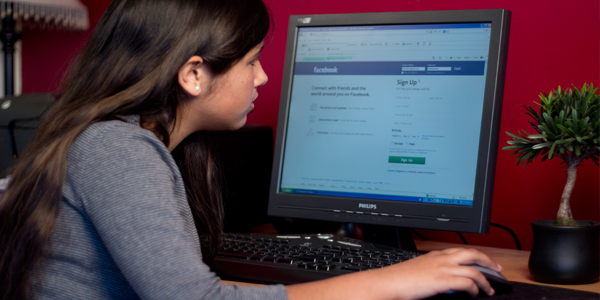
After brushing her teeth, Farah checks her Facebook account. She is officially too young to have such an account, but she and most of her friends lied about their age when registering and are now regular users. Every bit of information that Farah reveals about herself on Facebook—every event, song, or show that she “likes,” every status update and every picture— becomes part of the enormous data warehouse that the company sells to third parties. In the event of an emergency, police and security officials would also have access to the information on her page. Today, however, not much is happening, except that her friend Josh is bragging about his new toy car. Because he identifies the toy manufacturer by name, his comments will be automatically culled by firms that conduct online “data scrapes,” invisibly amassing and combining the comments of thousands of users about particular topics, products, or services. These firms then sell these data to companies eager to read citizens’ candid comments about products or policies. These same firms also collect online comments about people’s views on policies and social issues, which they sell to political strategists.
As her best friend, Ariel, is not yet allowed on Facebook, Farah uses Gmail to send Ariel a funny picture of the family’s dog. Again, although the rules for Gmail say that they are too young to have an account, Farah and all of her friends just lied about their age when registering. What she does not know is that when she communicates by email, her correspondence is subjected to different levels of automated scrutiny by global security agencies that monitor the flow of email. Should she contact suspicious people or use specific words or word combinations, her correspondence could be flagged for still greater scrutiny and follow-up by security officials. Her father often observes that, as a nuclear physicist educated in Iran, it is likely that his and all other family members’ messages are routinely read.
Stepping out the door, Farah contemplates how different things look on this warm spring day compared to the image of their street on Google Street View, which was taken in January. She only learned about Street View last week when she saw a car driving downtown with a camera sticking out of its roof. Kay then showed her some of the pictures of their neighbourhood streets available on Google’s mapping system. He was particularly eager to find the image of their friend Lani (with his face blocked out) playing with his dog in his front yard.
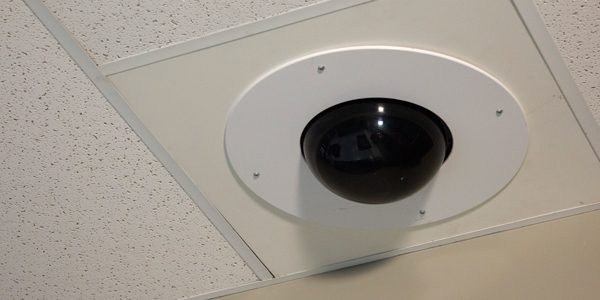
When Farah arrives at school, her image is captured by one of the video cameras that monitor each entranceway. The cameras were installed a few months ago by the school principal after a spate of graffiti appeared on the school walls.*
Farah hurries to her classroom because today is standardized-test day and she is anxious to do well. Her brother’s poor test scores have restricted his ability to enroll in his preferred high school courses, and she does not want to end up in Kay’s situation. Farah’s test scores will become part of her official educational dossier, which will accompany her at least until adulthood. The standardized-test scores are also used to assess teacher performance, and, in an increasingly competitive schooling environment, they have become a central means by which schools promote themselves and parents assess educational options.
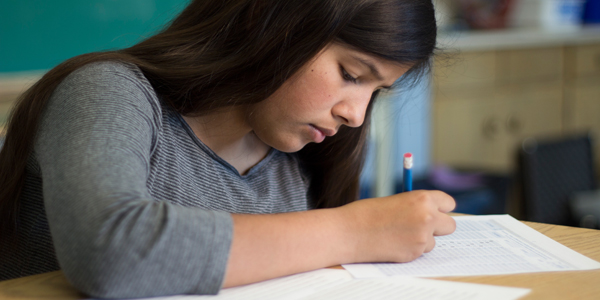
With the tests done, everyone rushes outside for recess, where teachers and a security-screened parent volunteer watch over them. Josh is showing off his new toy, pointing out that what makes the car particularly cool is that it contains a small video camera. When at home, he roars the car around his house and it records what it sees; he has already downloaded the video onto a computer. He has also used it to spy on his brother and to film the car stalking his apprehensive cat (which is implanted with a machine-readable microchip for identification purposes). Josh is disappointed that the girls are not particularly impressed since several own a “Video Barbie,” a doll that also has a working video camera.
Farah’s brother will buy his lunch in the cafeteria today with cash, but his money may not work here for much longer. A major international trend in schooling is to require students to pay for snacks or meals using electronic vouchers verified by a biometric identifier, such as a fingerprint or an iris scan. These systems eliminate the headache of handling cash and have the added benefit of allowing parents to monitor the purchases made on their child’s account. Parents can even specify items, such as candy or fried food, that the system will not let their kids buy.
Farah returns to school and chats briefly with Mrs. Krupp, who is accompanied by Constable Garza, the police officer who works out of the adjacent high school. Constable Garza serves as a role model and provides security, in part by cultivating an informal network of informants among the kids.
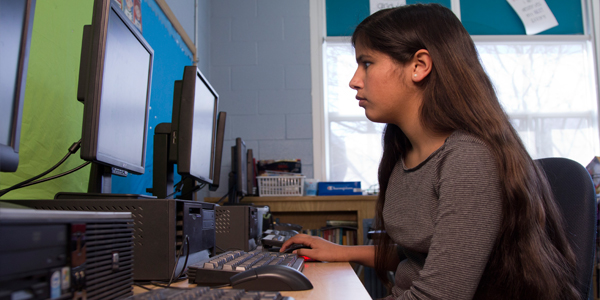
In class, Farah works on the school computers. As she visits different websites, her online behaviour is automatically monitored by electronic “cookies,” which track return visits and help to account for the increasingly targeted web advertisements that appear on her screen. Teachers keep a close eye to ensure that the kids do not visit inappropriate sites. Their vigilance is supplemented by the school’s computer software, which tracks students’ surfing behaviour, blocks them from sites deemed inappropriate, and produces automated reports on their online activity.
As the day progresses, Farah can barely contain her excitement about the fact that this evening her family will fly to Tehran to visit her extended family. Farah has often been on airplanes, but this is the first time that she has paid attention to the paperwork involved in international travel. She watched her dad apply for a visa and check the expiration dates on everyone’s passports. She also heard her parents complain about having to rush to get baby Bruno a passport, which involved the comic ordeal of trying to cajole a newborn into meeting Passport Canada’s standardized rules for how people must look on their passport photograph.
Both parents are waiting for her with an early birthday gift when Farah gets home. She already knows that her parents have acquiesced and bought her the smartphone she has been pestering them for. Initially, they were opposed to the idea of a ten-year-old having a cell phone, but they changed their minds as they learned more about the smartphone’s location-tracking abilities. They have already installed software on the phone that will allow them to pinpoint Farah’s physical location and follow her movements. Her parents have also eased their minds about the online risks to kids by installing a popular software program that allows them to access all of Farah’s email and text messages and to see who she has phoned and which websites she has visited.
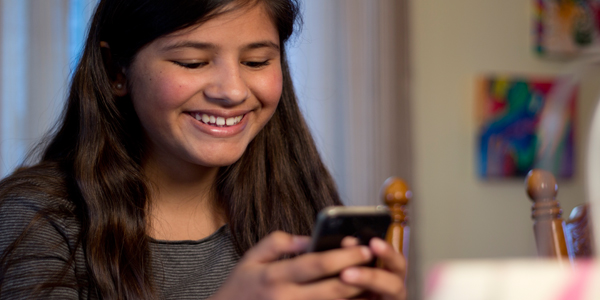
Kay arrives home complaining that he was not allowed to have a phone at Farah’s age. An exceptional athlete, Kay trains every day in the hope of making Canada’s youth soccer team. Should he be selected, he will be subjected to random blood and urine tests.*
Everyone makes final preparations for the trip. Since the introduction of new security measures after the 9/11 terrorist attacks, Farah’s dad has become obsessed about arriving at the airport extra early. Given his profession, his Iranian heritage, and the fact that he travels frequently to the Middle East, he worries that the prescreening of passengers might inadvertently place him on a no-fly list. Having the common Iranian last name of Farad compounds the possibilities for mistaken identity, so he leaves plenty of time to sort things out should there be any confusion.
The taxi arrives and Farah’s mom sets the house alarm. Her parents have had an alarm all of Farah’s life, but they recently upgraded to a service that monitors for intruders, fire, carbon monoxide, and flooding. There are also cameras on the entrances that can be watched from a computer or smartphone anywhere on earth provided there is an Internet connection. On a recent trip to Turkey, her dad used his phone to watch the kids leave for school while he himself was in his hotel room overlooking the Bosporus.
As Farah’s family cram into the taxi, they are photographed by a tiny camera near the windshield. Images of the cab driving to the airport are also captured by overhead traffic cameras. To avoid the rush-hour congestion, the driver veers onto the electronic toll road. Elevated sensors connect with the taxi’s transponder, an electronic device that allows the toll company to automatically identify each vehicle as soon as it enters the toll road so the toll fee can be calculated. Farah’s dad never bothered to install a transponder on the family car, so when he drives on this road, an advanced automated number plate recognition system scans his license plate and processes a bill.
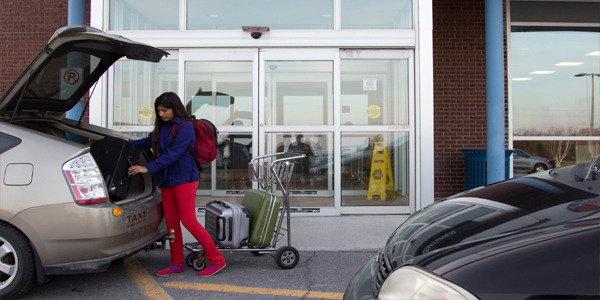
At the terminal, Farah’s dad pays for the taxi using his credit card. That transaction record then becomes one small part of his overall financial profile and also feeds into his credit rating. Everyone unloads the luggage under the gaze of police officers and the security cameras that pervade the airport.
Some of these cameras are so sophisticated that they can read the text messages on Farah’s new phone from a distance. But they will soon be replaced by cameras that contain microphones, which will enable security officials to surreptitiously listen to and record personal conversations.
Farah’s dad collects their boarding passes from the automated kiosk and surrenders the family’s travel documents to an agent. A sniffer dog ambles past as they heave their luggage onto the conveyor belt. Bruno is fussy in the snaking security line, prompting Farah’s mom and dad to discuss whether this year they should sign up for the Nexus program, which would provide them with an express route through security. This would require a processing fee and the surrendering to border service officials of even more details about themselves—their work history, travel patterns, and any criminal records they might have.
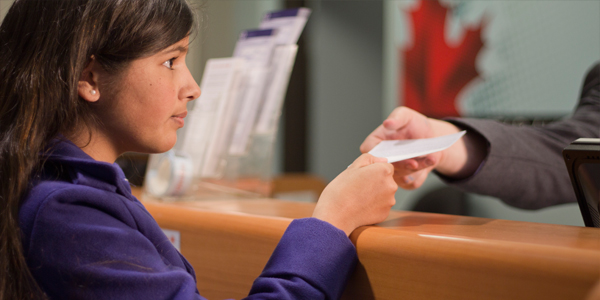
At the front of the line, their documents are checked again as they feed their hand luggage into the X-ray machine. Everyone then strides through the metal detector, Dad carrying baby Bruno, who is not thrilled about being removed from his stroller. Kay’s backpack is swabbed to check for explosives. Each family member then steps into the full-body scanner, which produces an image of them effectively as if stripped of their clothes. For this trip, they do not have their fingerprints scanned, but because of an extended visit last year to California while Farah’s father enjoyed a sabbatical at Stanford University, their fingerprint data are already stored on an American border security system. When they catch their connecting flight in London’s Heathrow airport, the family will also be scanned by facial-recognition soft- ware. Farah’s mom whispers to her dad that she is glad that this time, no one was selected for even more invasive screening.
Farah’s mom returns her laptop to her briefcase. Her dad snaps Bruno into the stroller, and everyone puts their shoes and belts back on. The family then troops to the executive lounge where Mom shuffles through her deck of customer loyalty cards to find the one that will grant them entry. She has cards for gasoline, groceries, hotels, coffee, cosmetics, and other services. Each membership gives perks and discounts and is part of a new information economy built upon minutely recording the consumption patterns of individual cardholders. Such information has become central to corporate decisions regarding product development, prices, and potential branch locations.
The setting sun illuminates the airplane cabin as they walk to their seats. Unbeknownst to them, an armed undercover RCMP air marshal furtively inspects everyone from his seat near the emergency exit.
Farah and her family will soon be high above Canada, but, in some respects, traces of each of them will remain behind in the form of increasingly large and refined informational profiles of text and image that have become central to how contemporary societies operate. Throughout Farah’s full but not particularly remarkable day, she and her family have been monitored by different people and organizations. As a comparatively privileged family, they have a distinctive monitoring profile that is particularly focused on issues of consumption and personal security. Irrespective of one’s position in society, however, all individuals can now expect to be subjected to more and different types of scrutiny than in the recent past, a trend that is poised to continue and intensify.
One might suggest that in Farah’s case, much of this scrutiny can be explained by the fact that she is a child, and we expect children to be watched. However, as she matures, Farah will actually be increasingly monitored as she engages with new and different organizations. When she drives a car and becomes involved in work, finance, travel, sports, and social services, she will be monitored by new organizations. She will be subjected to additional forms of scrutiny if she has medical issues or becomes caught up in the criminal justice system. As she progresses through school, her educational dossier will become larger and more consequential. We might even anticipate that at least some of the futuristic prospects about interactive advertisements and camera-equipped security drones will become a reality in her world. Hers will be a world permeated by surveillance, something that will bring new opportunities but that also threatens to overwhelm existing privacy regimes and will challenge us all to contemplate how we should live our increasingly transparent lives.
